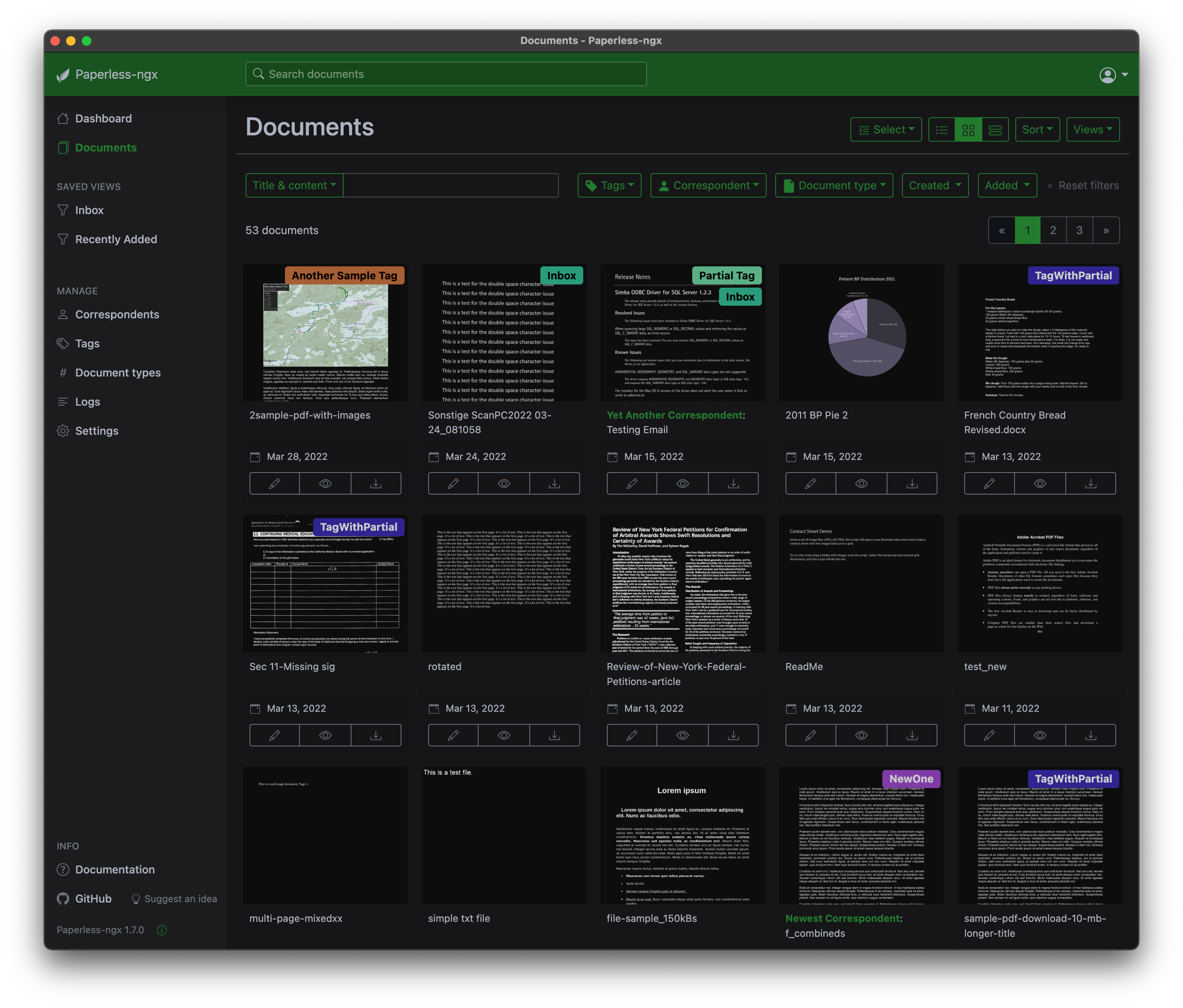
Automating Document Archival with paperless
When I moved into my home, one of the first things I did was set up a solution for digitally archiving mail and other paperwork. The sheer volume of paperwork that accumulates over time as a homeowner can be overwhelming. Thankfully, I’ve found an efficient solution to this problem by using paperless-ng software in combination with my Brother ADS-2800W scanner, a network-attached storage (NAS), and some custom rules.
The Setup
First, let me give you a glimpse of my setup. I have a Brother ADS-2800W scanner that scans documents directly to a folder on my NAS. This scanner is a workhorse, and its seamless integration with my network makes it an essential part of my document management process. I had to set up some different profiles on the scanner to be able to handle documents of varying physical length, but now that I’ve done that I can just use the touch screen on the scanner and scan to my NAS with one press. Scanning to a network folder ensures that all my digital documents are stored in a centralized location accessible from any device within my network. The scanner is hardwired via ethernet so documents are immediately available on my network.
Organizing the Documents
This is where paperless-ng comes into play. This open-source software is a game-changer when it comes to automating document archival. I run it on the same NAS home server as a separate docker container. Here’s how I’ve configured it to fit my needs:
Auto OCR
With paperless-ng, every scanned document is automatically processed through OCR. This means that even scanned images are transformed into searchable text, making it incredibly easy to locate specific documents in the future.
Categorization Rules
One of the standout features of paperless-ng is its ability to categorize documents based on rules you set up. Custom rules allow the software to intelligently categorize incoming documents. For instance, all tax-related documents are automatically tagged as “Tax,” and documents from my bank tagged with the appropriate correspondant. I even have some rules setup where if I am emailed documents from a particular sender, it will get loaded directly into paperless. I use this for some utility companies that email me pdf bills, and also to be able to email myself documents to store on my NAS. Even if automatic categorization doesn’t work, paperless-ng offers a nice UX for tagging documents. Categorization simplifies the retrieval process and ensures that documents are neatly organized.
Correlation with Physical Binder
While digital documents are convenient, there are times when I prefer to have a physical copy. For this purpose, I maintain a physical binder. Paperless-ng provides a nice feature that allows me to correlate digital documents with specific pages in my binder. This ensures that even when I need a hard copy, I can quickly locate the corresponding digital version, eliminating the hassle of manual cross-referencing.
Efficiency and Peace of Mind
The combination of the Brother ADS-2800W scanner, my NAS, and paperless-ng has significantly streamlined my document management process. I no longer worry about misplacing important documents or spending endless hours searching for specific information. Everything is neatly archived, categorized, and accessible at my fingertips. Come tax time I can search by category and pull up all my medical receipts for the year, or look back at historical bank statements in seconds.
Conclusion
I value efficiency and automation in every aspect of my work and life. The paperless-ng software, paired with the Brother scanner and my NAS, has revolutionized the way I handle documents. It’s a testament to the power of open-source tools and customization to suit individual needs.
If you’re tired of drowning in paperwork and seeking an elegant solution to automate document archival, I highly recommend giving paperless-ng a try. It has certainly made my life easier and more organized. Since setting this up there is an updated fork of the software called paperless-ngx that I would recommend using instead.